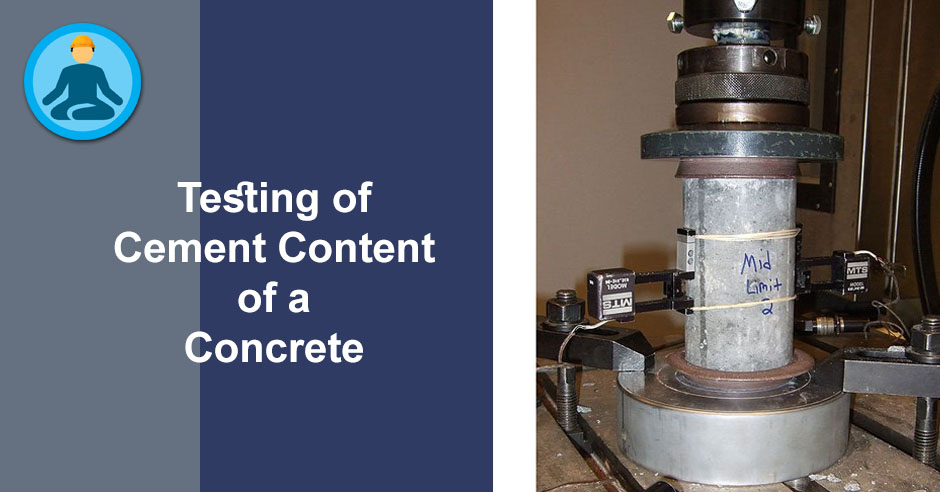Cement content in any concrete has a direct relation to the strength of the concrete, its durability and impermeability. For tests for cement content and other forms of concrete testing, standards have been laid down which need to be adhered to by civil engineers.

Compression Testing
Cement content is important to allow engineers to gauge the structural stability of any building or concrete structure where it is used. High cement content on the other hand can cause concrete to suffer from excessive shrinkage and thermal cracking, which can cause the concrete to spall and thus be dangerous for a structure.
Cement is a material that is manufactured as per strict quality controls and thus has strengths that are known. Structural engineers use this known factor to design concrete mixes that have a specified cement content that allows the concrete to gain the strength that is desired for the structure where it is to be used. While the quality of the other aggregates also play a part in the composition, and therefore strength of concrete, this has more to do with their capacity to form compact concrete that will give the necessary strengths. The other aspects of concrete that determine the strength of the concrete are the water content, the placing of the concrete, compaction, presence of honeycombs, and air content. Designers lay down standards for all these parameters when they design a concrete structure.
Procedure
- Testing of concrete for cement content is done by crushing a sample of the concrete obtained from the concrete through core sampling.
- The concrete is then crushed and the resulting fine powder tested chemically.
- This determines the insoluble residue, lime content, and soluble silica.
- This is then compared with control samples of the cement or from assumptions made after ascertaining the source of the cement used in the concrete.
Such test will give an accuracy that may be plus or minus fifteen percent of the actual cement content.
Determining cement content of concrete that is already part of a structure becomes relevant when failures have occurred and it is necessary to find the causes of a failure. Otherwise other methods for testing of concrete are more important.
